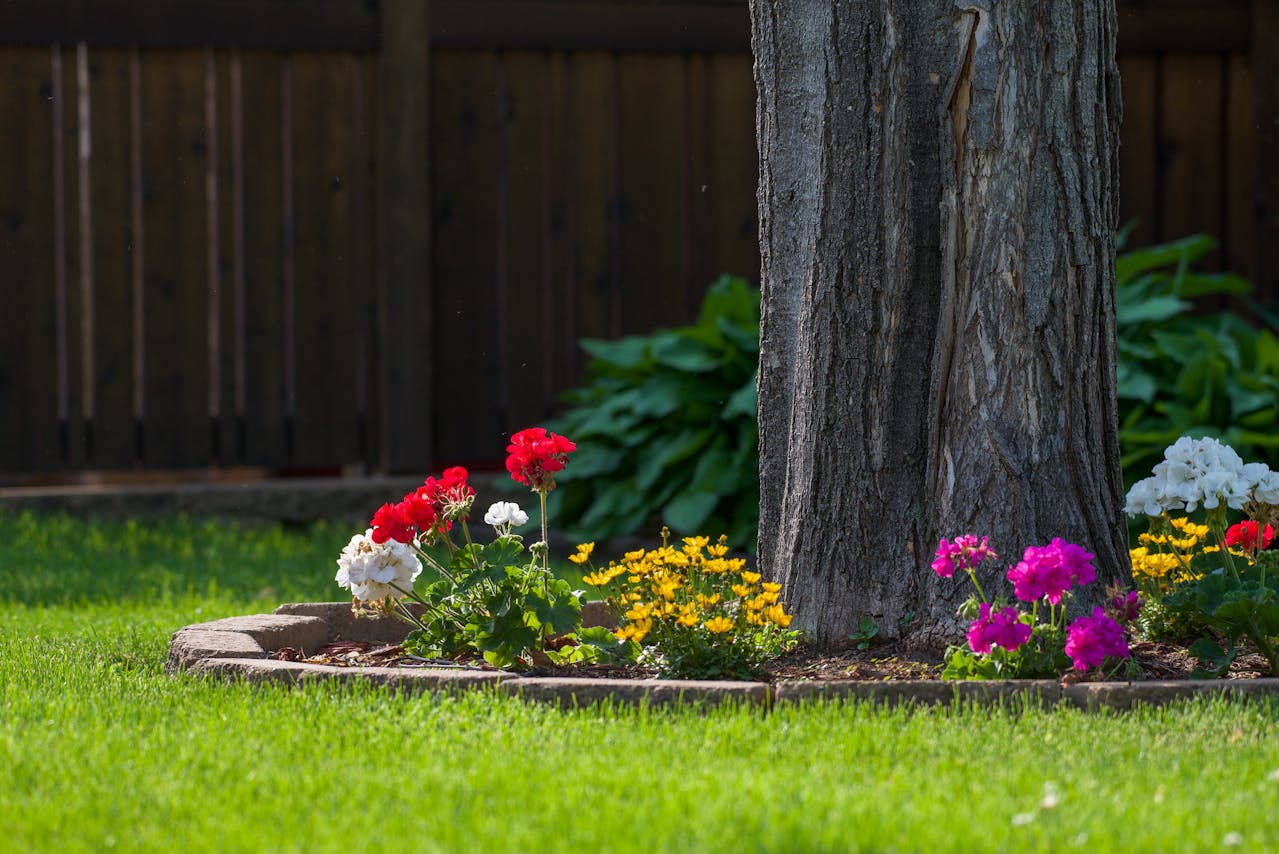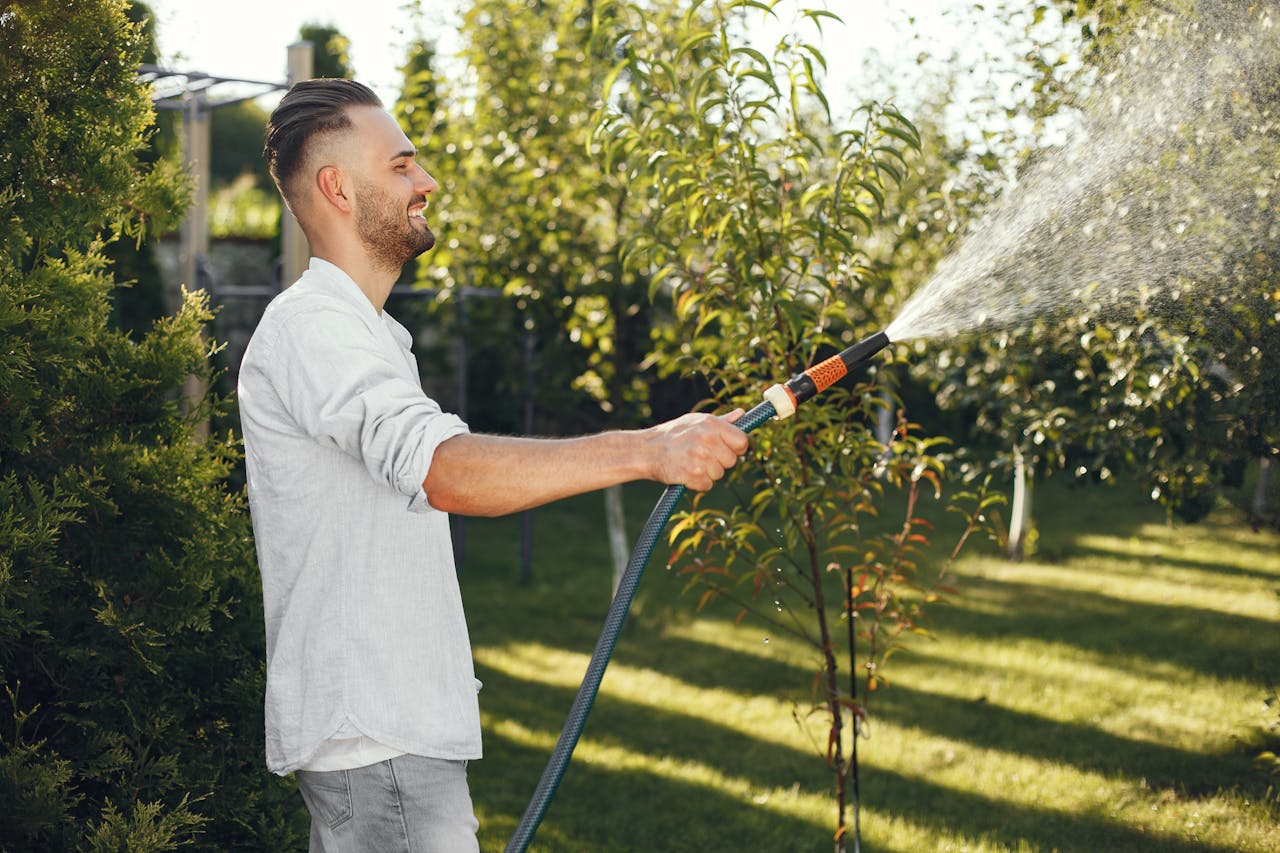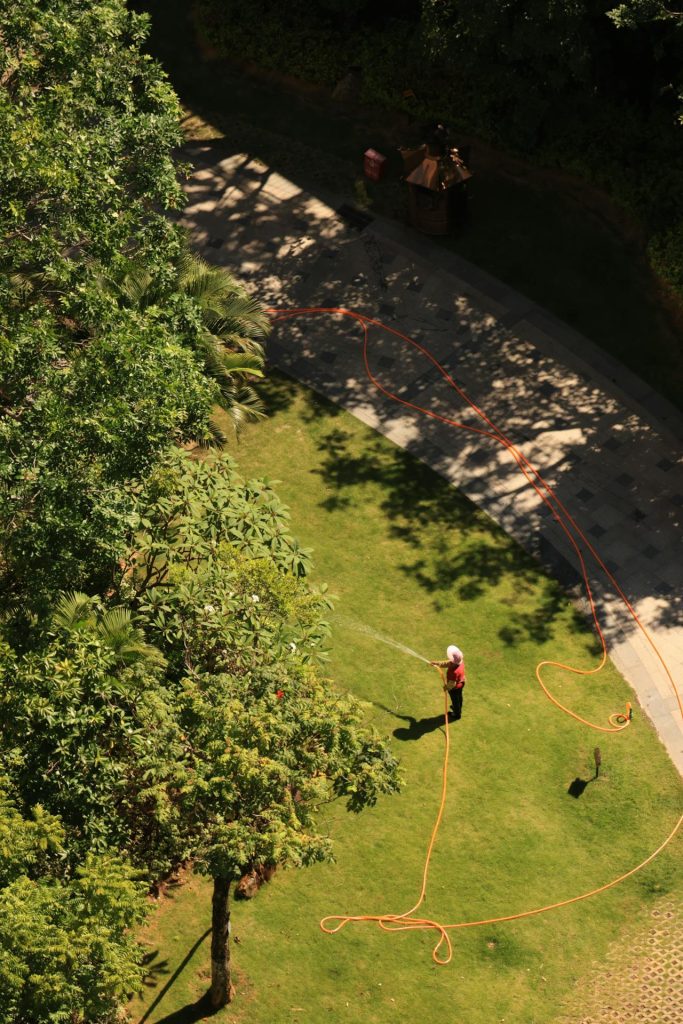Trees are vital components of our ecosystem, providing shade, oxygen, and habitat for wildlife. However, like all living organisms, trees can suffer from various health issues. Early detection and treatment of these problems are crucial to maintaining their health and ensuring their longevity. This article provides an in-depth guide on how to spot and treat tree health issues early.
Before delving into specific health issues, it’s important to understand what constitutes a healthy tree. A healthy tree typically has:
- Vigorous growth with a dense canopy of leaves or needles.
- Consistent annual growth, indicated by new twigs and leaves each year.
- Few dead branches or abnormal leaf loss.
- Strong, solid trunks without significant cracks or cavities.
- Healthy, undamaged roots.
1. Common Signs Of Tree Health Issues
Spotting tree health issues early involves recognizing the following common signs:
A. Leaf Discoloration and Deformation
- Yellowing Leaves: Could indicate nutrient deficiencies, overwatering, underwatering, or root problems.
- Brown Or Black Spots: Often a sign of fungal infections or insect damage.
- Wilting Leaves: May suggest root damage, drought stress, or vascular diseases.
B. Bark Abnormalities
- Cracks And Splits: Could result from environmental stress, such as frost or physical damage.
- Cankers: These sunken, dead areas on the bark are often caused by fungal or bacterial infections.
- Discoloration: Changes in bark color can indicate disease or pest infestations.
C. Branch And Twig Problems
- Dead Branches: Also known as dieback, dead branches can result from disease, pest damage, or environmental stress.
- Suckers Or Water Sprouts: These fast-growing shoots indicate stress or injury.
D. Root Issues
- Surface Roots: This can be a sign of soil compaction or poor growing conditions.
- Mushrooms At The Base: Often indicate root rot or decay.
E. Abnormal Growth Patterns
- Stunted Growth: This can be due to nutrient deficiencies, poor soil conditions, or disease.
- Burl Formation: These large, woody growths are often caused by bacterial or fungal infections.
2. Common Tree Health Issues And Treatments
Here are some common tree health issues and how to treat them:
1. Nutrient Deficiencies
- Yellowing leaves, stunted growth, poor flowering, and fruiting.
- Conduct a soil test to determine nutrient deficiencies. Amend the soil with appropriate fertilizers based on the test results. Common deficiencies include nitrogen, phosphorus, and potassium, which can be treated with balanced fertilizers.
2. Overwatering And Underwatering
- Overwatering can cause yellowing leaves and root rot while underwatering results in wilting and leaf drop.
- Ensure proper watering practices. Water deeply and infrequently, allowing the soil to dry between waterings. Mulching around the base can help retain moisture.
3. Pest Infestations
- Chewed leaves, holes in the bark, sap oozing from the trunk.
- Identify the pest and apply appropriate insecticides or biological controls. Encourage natural predators and maintain tree health to reduce susceptibility to pests.
4. Root Rot
- Mushrooms at the base, stunted growth, wilting leaves.
- Improve drainage around the tree and avoid overwatering. In severe cases, removal of the affected tree may be necessary to prevent the spread of the disease.
5. Environmental Stress
- Leaf scorch, cracked bark, dieback.
- Protect trees from extreme conditions. Use tree wraps or guards to prevent sunscald. Water during dry periods and apply mulch to retain soil moisture.
3. Common Tree Diseases
A. Fungal Infections
Fungal infections in trees often show visible fruiting bodies or mushrooms, indicating the presence of fungi. Check the moisture levels around the tree because excess moisture can encourage fungal growth. To prevent the spread of fungi, practice proper sanitation in your garden.
B. Bacterial Diseases
Identify bacterial infections in trees through symptoms like oozing sap and leaf spots. These diseases can spread rapidly, so swift action is crucial. Ensure your pruning tools are clean to avoid transmitting bacteria between trees.
C. Viral Infections
Viral infections in trees exhibit signs such as stunted growth and mottled leaves. Research the specific viruses that affect local tree species for accurate identification. Consider how insect vectors play a role in spreading viral diseases among trees.

4. Identifying Specific Diseases
A. Disease Symptoms
Recognize common symptoms like leaf spots, wilting, or abnormal growth to detect diseases early. Differentiate between environmental stress signs and those indicating specific diseases for accurate diagnosis. Understand seasonal variations in symptoms to effectively pinpoint disease presence.
B. Visual Cues
Utilize changes in leaf color and texture as indicators of tree health issues. Document any abnormal growth patterns or branch dieback for further evaluation. Conduct regular visual inspections to spot problems promptly and prevent severe damage.
C. Seasonal Patterns
Monitor seasonal changes in tree appearance to identify unusual patterns signaling diseases. Certain tree diseases may exhibit symptoms more prominently during specific seasons. Adapt care routines according to seasonal requirements, such as increased watering in summer.
5. Preventative Measures
A. Proper Watering
Establish a consistent watering schedule tailored to the tree’s needs. Avoid overwatering, as it can suffocate roots and promote disease. Use mulch to retain soil moisture and regulate temperature around the tree.
B. Regular Pruning
Schedule regular pruning to remove dead or diseased branches effectively. Encourage healthy growth by shaping trees and improving air circulation. Ensure proper pruning techniques are used to minimize stress on the tree.
C. Soil Health
Test soil quality regularly to understand nutrient levels and pH balance. Incorporate organic matter to improve soil structure and fertility. Monitor drainage to prevent waterlogging, which can harm tree roots.
6. Treatment Options
A. Organic Treatments
Organic treatments offer natural solutions for addressing tree health issues. Neem oil serves as an effective remedy for controlling pests without harming the environment. Compost tea, rich in nutrients, aids in boosting soil health and enhancing tree vitality. Companion planting introduces beneficial plant species to deter pests naturally.
- Neem oil for pest control
- Companion planting to deter pests
- Utilize natural fertilizers for growth
B. Chemical Treatments
Chemical treatments provide targeted solutions for combating specific tree diseases and pests. When using fungicides or insecticides, it is crucial to adhere strictly to the instructions on the product labels. Researching and selecting the appropriate chemical treatment is essential for effective results. Integrated pest management strategies help in reducing the reliance on chemical interventions.
- Research specific chemical treatments
- Follow label instructions meticulously
- Implement integrated pest management
6. Encouraging Prompt Action
A. Importance Of Early Detection
Detecting tree health issues early is crucial to prevent significant damage. Regular monitoring is key to catching problems before they worsen. Educating yourself and others on early warning signs can promote proactive care.
- Regular monitoring helps in identifying issues promptly
- Educating others spreads awareness for better tree health management
C. Professional Help
In some cases, seeking professional assistance becomes necessary to diagnose and treat complex tree health issues. Arborists possess specialized knowledge to offer tailored advice on treatment plans and ongoing maintenance strategies. When faced with severe problems like disease outbreaks or structural concerns, engaging professional services ensures safe and efficient resolution.
- Consult arborists for tailored advice
- Professional services for safe tree removal
- Diagnosing complex tree health issues
Final Remarks
Understanding the signs of tree health issues early can save you time, money, and the beauty of your landscape. By recognizing common diseases and taking preventive measures, you ensure your trees thrive. Identifying specific problems promptly allows for targeted treatment, preserving the health of your green companions. Remember, prompt action is key to combating tree diseases effectively.
Take charge of your tree’s well-being by staying vigilant and informed. Regularly inspect your trees, address any concerns swiftly, and consult with professionals when needed. Your proactive approach will not only protect your trees but also contribute to a healthier environment overall. Keep nurturing your trees with care and attention, and they will continue to grace your surroundings with their natural splendor.
Frequently Asked Questions
1. How Can I Understand The Health Of A Tree Better?
To understand your tree’s health, look for signs like leaf discoloration, wilting, or unusual growth patterns. Regularly inspect the bark for any lesions or cracks. Consulting with a certified arborist can provide professional insights into your tree’s health status.
2. What Are Some Early Signs Indicating Tree Health Issues?
rz6ew5$QWmjEarly signs of tree issues include yellowing leaves, premature leaf drop, stunted growth, and abnormal swelling on the trunk. Keep an eye out for these changes as they can indicate underlying problems that need attention.
3. Which Are Common Diseases That Affect Trees?
Common tree diseases include powdery mildew, root rot, and oak wilt. These diseases can impact the overall health and vitality of trees if left untreated. Recognizing symptoms early and taking preventive measures can help protect your trees from these threats.
4. How Can I Identify Specific Diseases Affecting A Tree?
Identifying specific tree diseases involves observing symptoms like leaf spots, cankers, or fungal growth on the bark. Conduct a thorough inspection and consider consulting an arborist for accurate diagnosis and treatment recommendations tailored to the disease affecting your trees.
5. What Preventative Measures Can Take To Maintain Tree Health?
To maintain tree health, ensure proper watering, mulching, and pruning practices. Regularly monitor your trees for signs of stress or disease. Implementing good cultural practices and promoting overall tree vigor can help prevent many common health issues.
Transform Your Landscape With JC Tree Service’s Expert Tree Health Care
If tree health issues are impacting your home or business, JC Tree Service is equipped to provide expert solutions. Whether it’s unsightly trees affecting your property’s visual charm or potential hazards posing a safety risk, our specialized team manages it all. We offer comprehensive tree health services, including precise pruning, disease management, and expert landscaping, serving Brentwood, Antioch, and surrounding areas.
We understand the crucial roles of aesthetics and safety in tree care, hence we commit to delivering top-tier services tailored to your needs. Maintaining tree health is vital not only for enhancing your property’s appearance but also for ensuring the safety of your surroundings. Effective tree health care helps prevent disease spread, reduces the risk of falling branches, and promotes a thriving environment. With JC Tree Service, you can be confident that your landscape is in the hands of professionals dedicated to keeping your outdoor spaces both beautiful and safe.
Don’t let tree health issues detract from the beauty and security of your surroundings. Contact JC Tree Service today to explore how our expert tree health care and additional services can transform your property. We offer a free, no-obligation quote to get you started. Experience the impact of professional tree care!
Disclaimer
The materials available on this website are for informational and entertainment purposes only and not to provide legal or professional advice. You should contact your attorney or home improvement specialist to obtain advice concerning any particular issue or problem. You should not act or refrain from acting based on any content included in this site without seeking legal or other professional advice. The information presented on this website may not reflect the most current home improvement developments. No action should be taken in reliance on the information on this website. We disclaim all liability concerning actions taken or not taken based on any or all of the contents of this site to the fullest extent permitted by law.




















